Condições Imperdíveis da Black November Aqui! 🔥
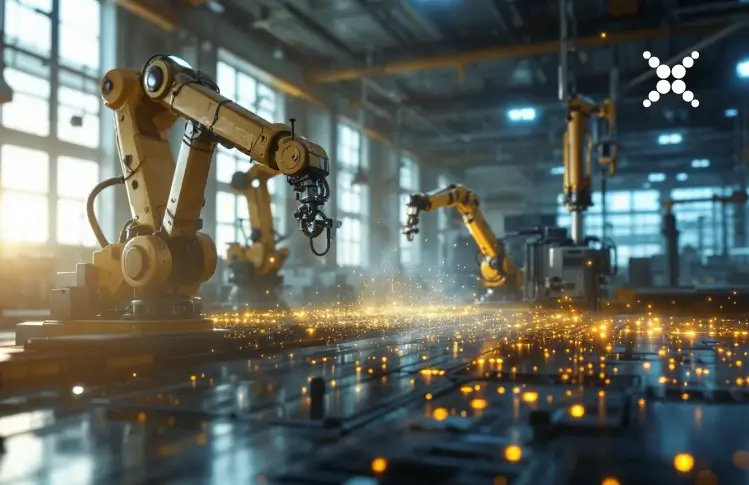
We are in an era of constant transformation, where industrial lighting is not just about keeping spaces visible but also about efficiency, innovation, and sustainability. Every year, new trends emerge to meet the demands of increasingly demanding industries, and 2025 is no different.
Whether you’re an engineer seeking the next big innovation or a technology enthusiast, these trends will keep you ahead of the curve.
Ready to explore the future? Let’s go!
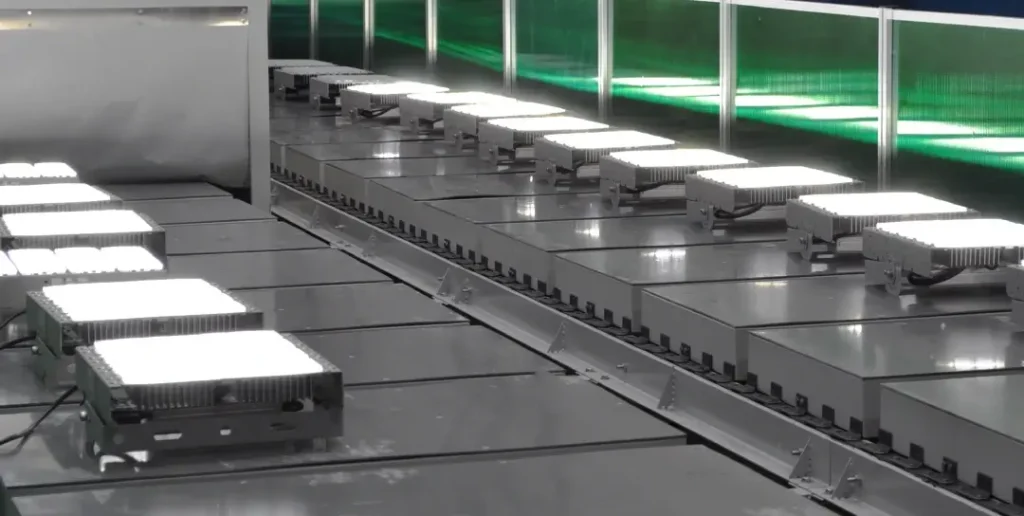
How is your company leveraging automation to improve energy efficiency and safety?
The LED revolution continues, now more integrated with intelligent systems that not only offer energy efficiency but also complete control over the work environment. With sensors that detect presence and adjust light intensity as needed, these solutions help reduce costs and enhance safety.
Practical example: In a large industrial facility, automation can ensure that less-used areas have reduced lighting, saving energy without compromising safety.
Human-centric lighting is gaining traction as a way to improve health and well-being in the workplace. This system adjusts the light temperature to mimic the natural day cycle and can be customized for different tasks.
Practical example: On an assembly line, cooler light can be used for tasks requiring high concentration, while warmer light may be better for relaxation or breaks.
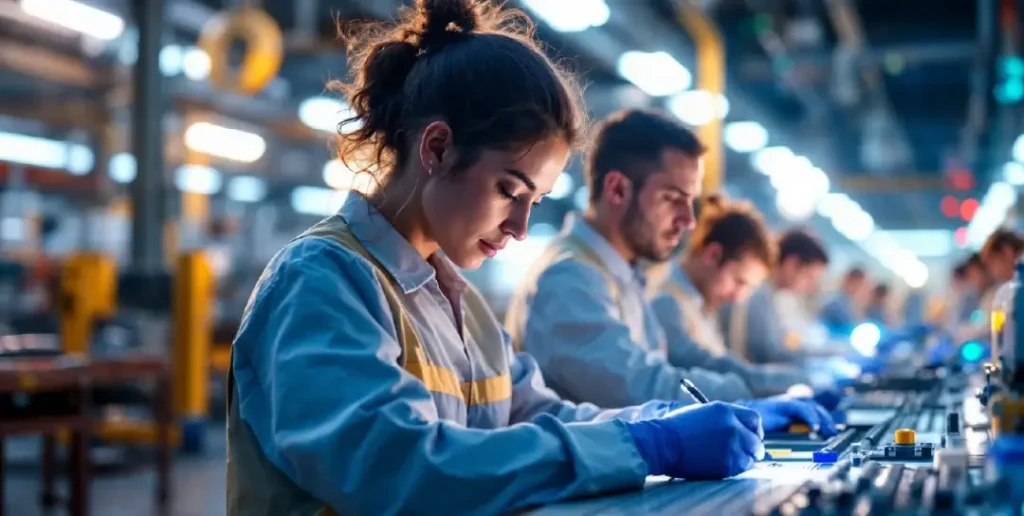
In sectors like the fertilizer industry, lighting durability is crucial. New technologies are focusing on coatings that resist not only corrosion but also extreme temperatures and constant vibrations.
Practical example: The use of luminaires with special polymer coatings in offshore platforms, where constant exposure to corrosive elements quickly compromises safety.pidamente a segurança.
With increasing pressure to reduce the carbon footprint, sustainable lighting is becoming a necessity. This includes the use of renewable energy like solar and recyclable materials in the manufacturing of luminaires.
Practical example: An industrial facility in Germany that integrated solar panels with its lighting system reduced energy costs by up to 30%.
Is your company exploring all possibilities to make lighting more sustainable?
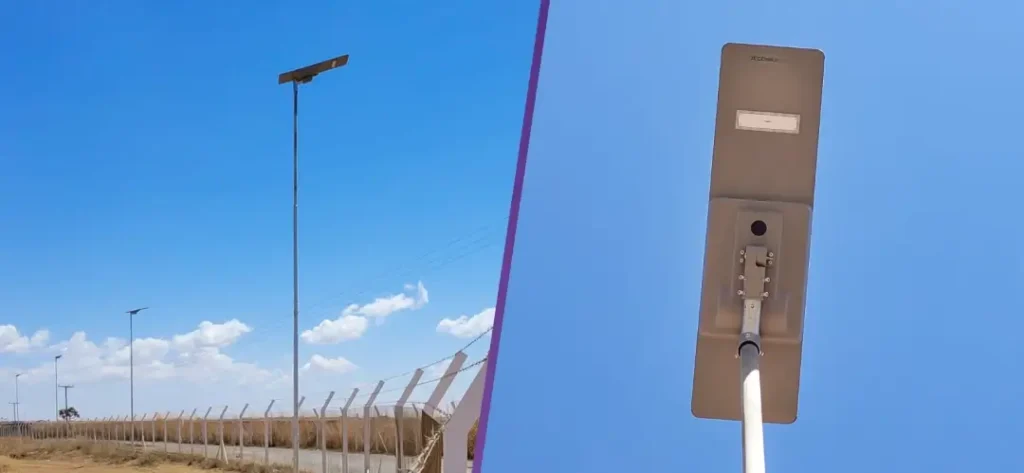
Have you thought about this?
Li-Fi, an emerging technology that uses light to transmit data, is being considered a revolutionary alternative to Wi-Fi in industrial environments.
Practical example: In semiconductor factories, where interference is critical, Li-Fi offers a more stable and secure solution.
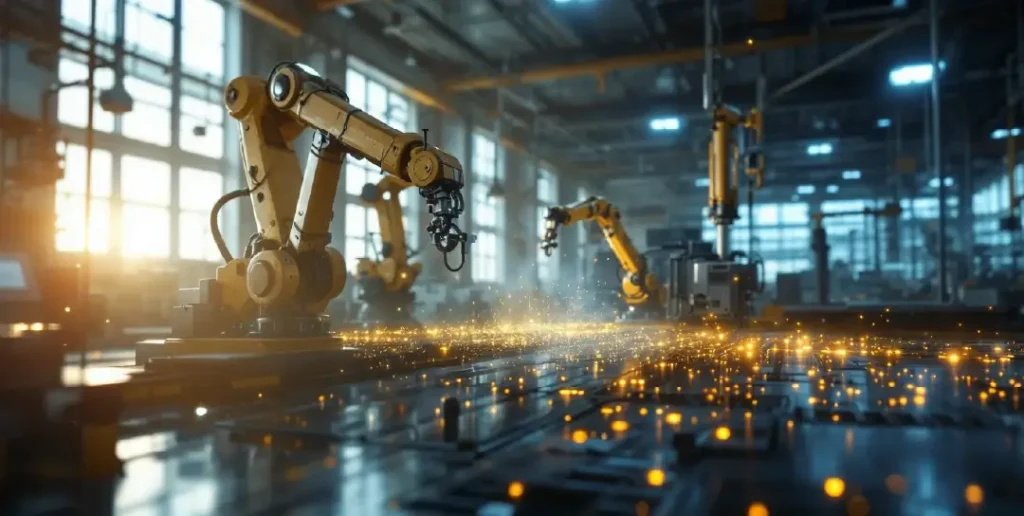
The COVID-19 pandemic highlighted the importance of hygienic environments, driving the adoption of UV-C lighting for disinfection. These systems are widely used in food and pharmaceutical industries to ensure pathogen-free surfaces.
In industries operating in potentially explosive environments, such as petrochemicals, lighting needs to be both durable and intelligent. The evolution of explosion-proof luminaires now includes sensors that continuously monitor the environment.
Practical example: The use of these technologies in refineries, where accident prevention is a priority.
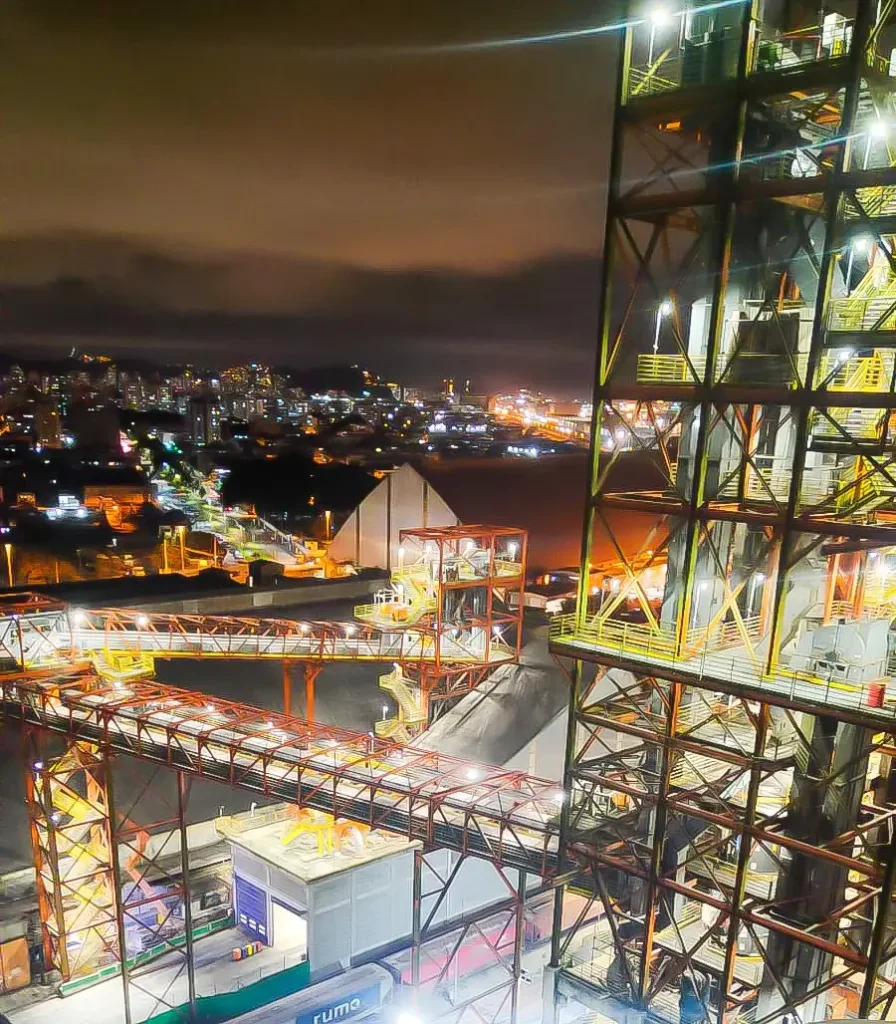
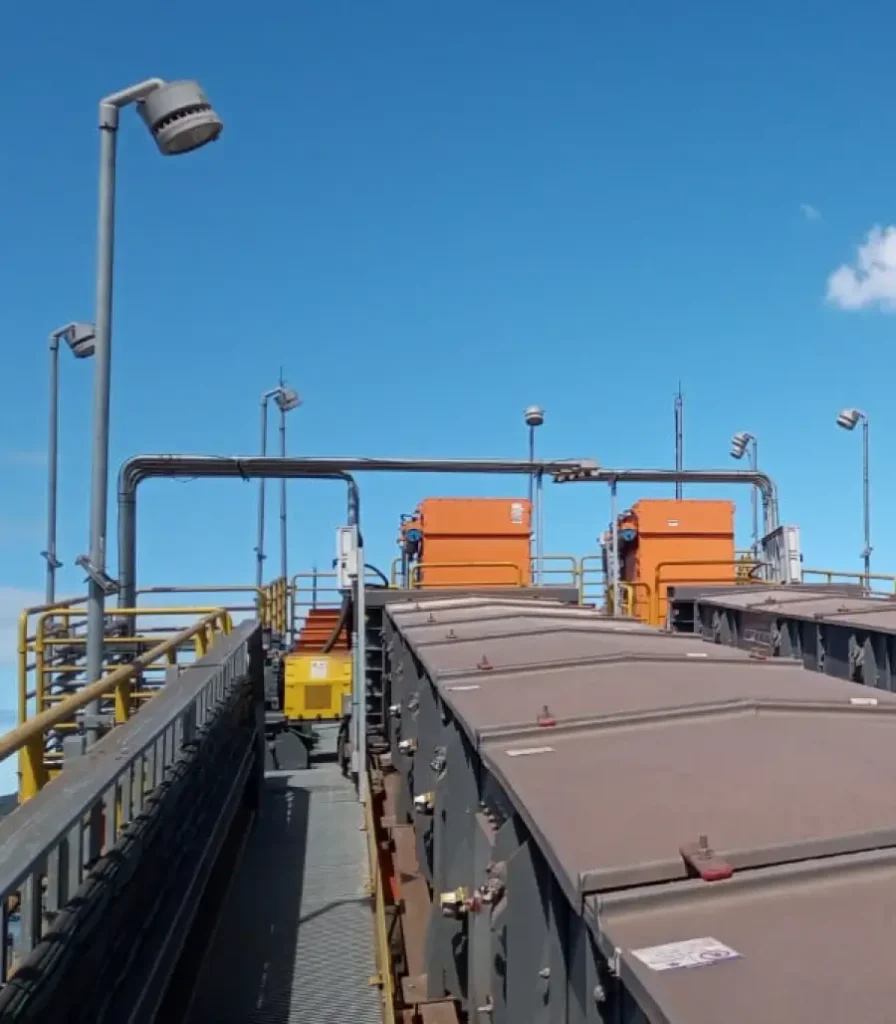
Flexibility is the keyword for modular lighting. As industrial needs change, the ability to quickly adjust lighting systems without major overhauls becomes a differentiator.
Practical example: In production lines frequently reconfigured, modular lighting enables rapid adaptations, minimizing costs.
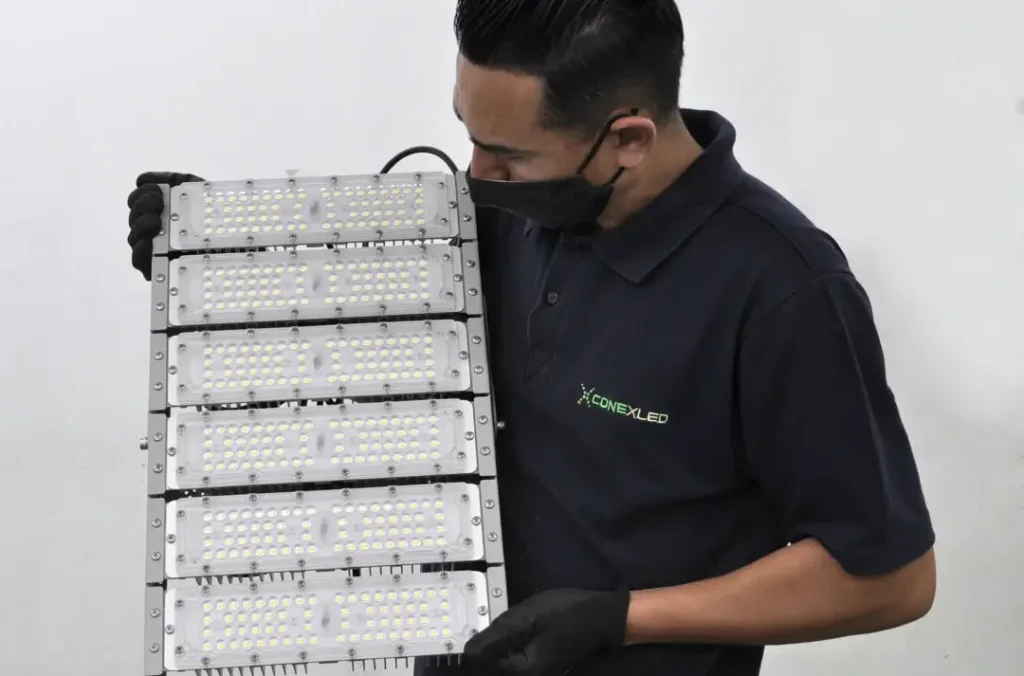
The integration of emergency lighting systems into industrial solutions is gaining prominence. Instead of separate systems, companies are adopting luminaires with emergency operation modes, ensuring lighting in case of power failures.
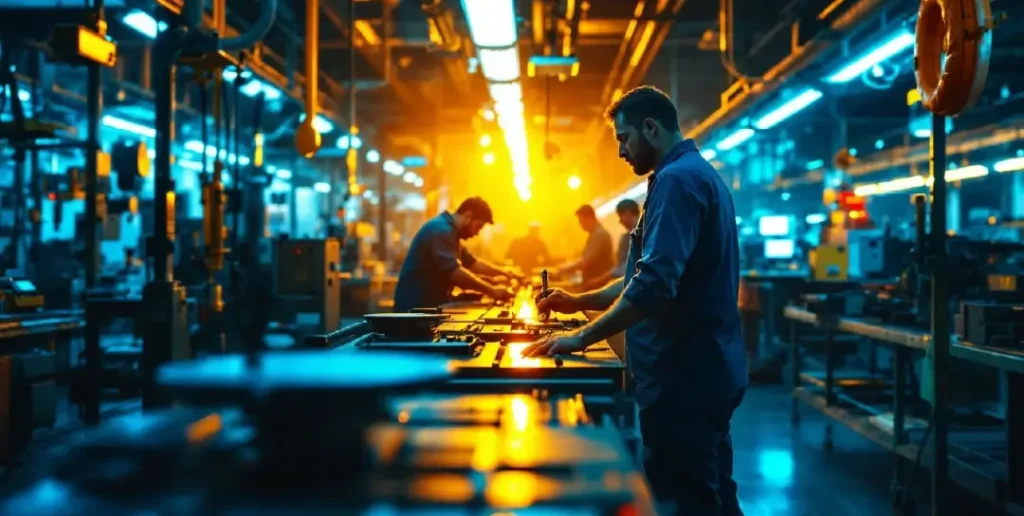
CNPJ 54.601.612/0001-69
Conex Eletromecânica Ind e Com Ltda.
A Conexled procura constantemente novos fornecedores para seus negócios.
Se você tem interesse em ser um de nossos parceiros, preencha o formulário abaixo.
Quer ser um representante da Conexled?
Se você tem interesse em ser um parceiro da marca, preencha o formulário abaixo.
Ficou com alguma dúvida, ou precisa de ajuda para escolher a melhor solução para seu projeto?
Fale diretamente com um de nossos consultores.